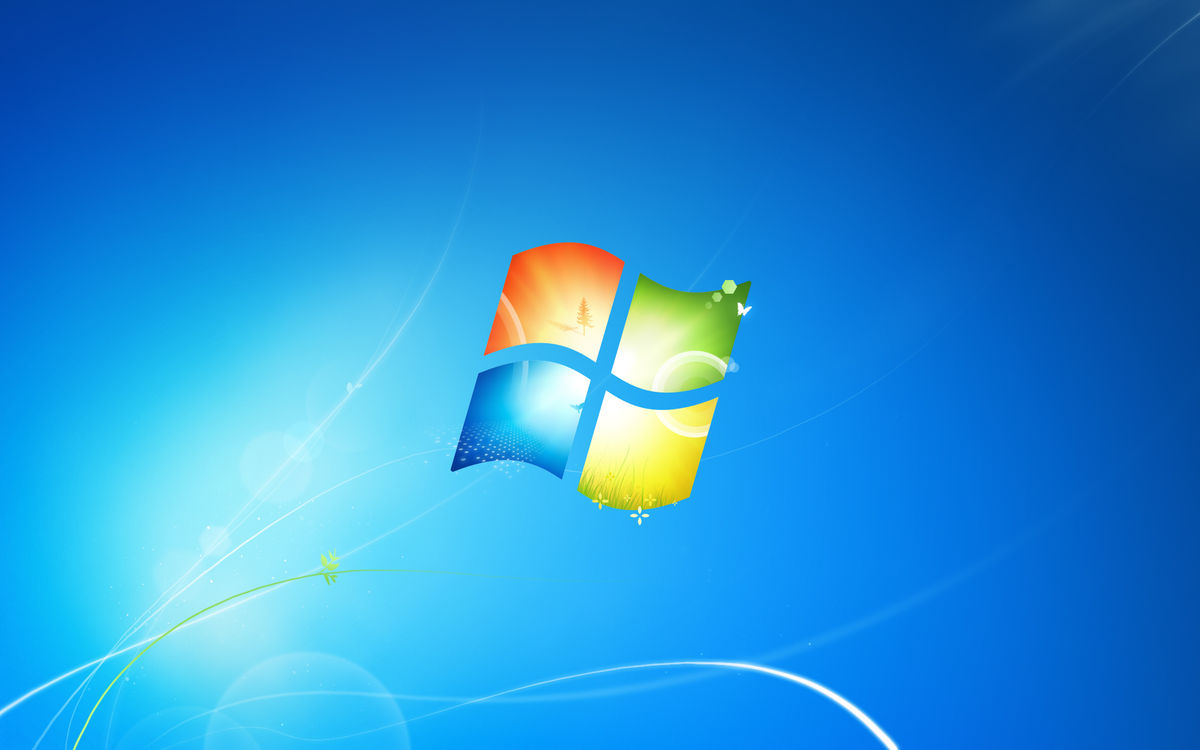After nearly a decade of powering millions of devices, Windows 10 officially reached its end of life on October 14, 2025. For many, it’s the end of an era. The operating system that defined home offices, classrooms, and businesses worldwide will no longer receive free updates, new features, or security fixes from Microsoft.
Your PC will still turn on and run like it always has but it’s now on borrowed time. Without future patches, Windows 10 will slowly become more vulnerable to viruses, malware, and cyber threats. Microsoft’s message is clear: it’s time to move forward.
For those ready to upgrade, Windows 11 offers a faster, more secure experience. But not every PC can handle the jump. Older systems may lack the required hardware leaving users with a tough choice: pay for Microsoft’s Extended Security Updates (ESU) program, which keeps Windows 10 protected until October 13, 2026, or explore alternative operating systems like Linux.
This shift isn’t just about software, it’s a moment that affects users, students, and IT professionals alike. For learners especially, it’s a reminder that technology moves fast, and staying relevant means understanding how to manage both old and new systems.
That’s where platforms like Ascend Education step in offering online courses that help students and professionals master Windows environments, system management, and troubleshooting. Because as Windows 10 fades, the demand for people who can support and transition these systems is only growing.
What Actually Happens After Windows 10 Support Ends?
The phrase “end of support” can sound dramatic, but here’s what it really means: your Windows 10 computer won’t suddenly stop working but it also won’t stay safe forever.
Starting October 14, 2025, Microsoft officially stopped releasing updates for Windows 10. That includes both security patches and feature updates, the two things that quietly protect your system from new malware, bugs, and vulnerabilities. Without them, every passing month makes your device a little more exposed.
There’s also no more free technical support. If you run into an issue, Microsoft won’t provide help unless you’re part of their paid Extended Security Updates (ESU) program. This plan gives users an extra year of protection up to October 13, 2026 but it’s meant as a temporary bridge, not a long-term solution.
Your computer will still boot up, your files will still be there, and most apps will still run. But as developers shift to newer versions of Windows, compatibility will slowly break down. Over time, web browsers, software, and even antivirus tools will stop supporting Windows 10.
It’s not the end of the world but it is the beginning of a more fragile setup. For users who rely on older devices, the next step is about balance: keeping systems secure while preparing for the inevitable upgrade.
That’s what we’ll explore next: the options you have right now and what makes sense depending on your device, needs, and comfort level.
What Are Your Real Options Now?
With Windows 10 officially retired, you have three main paths forward and which one you choose depends on your device, budget, and how comfortable you are with new tech.
1. Upgrade to Windows 11
This is the most straightforward and secure choice. Windows 11 comes with enhanced privacy settings, AI-powered tools like Copilot, and stronger built-in security. If your PC meets the technical requirements like TPM 2.0 support and compatible processors upgrading ensures you’ll keep getting updates, patches, and support for years. Microsoft even provides a free upgrade for eligible systems, making it the easiest long-term solution.
2. Enroll in the Extended Security Updates (ESU) program
For users whose devices can’t handle Windows 11, Microsoft’s ESU program offers a safety net. It delivers essential security updates until October 13, 2026, but no new features or enhancements. It’s a paid service, meant for those who need extra time to transition, especially small businesses or schools relying on older hardware.
3. Consider an alternative operating system
If your PC can’t upgrade and you’d rather not pay for ESU, switching to a Linux-based system is a practical, free alternative. Modern Linux distributions like Ubuntu or Linux Mint are user-friendly, lightweight, and secure. They’re excellent options for browsing, productivity, and even coding, though they require a bit of learning at first.
Whichever path you choose, what matters most is staying proactive. Outdated software quickly becomes a security risk, especially in an era where cyber threats evolve daily.
This is also the perfect moment for students and IT professionals to sharpen their system management skills. Platforms like Ascend Education offer comprehensive Windows and OS management courses that help learners understand upgrades, data migration, and system security skills every employer needs during transitions like this.
Why Does This Matter for Everyday Users and IT Professionals?
For most everyday users, the end of Windows 10 support might seem like just another update announcement but it’s far bigger than that. This change affects how people use their devices, how businesses maintain operations, and how IT professionals manage entire systems.
Let’s start with users. When Microsoft stops releasing security patches, every unpatched vulnerability becomes an open door for hackers. Malware, ransomware, and phishing scams often target older systems precisely because they’re easier to exploit. So, while your computer might look fine, the real risk is silent and it grows over time.
Now, for IT professionals and students training to enter the field, this is a moment that highlights how fast the tech ecosystem moves. Organisations everywhere are scrambling to migrate systems, secure legacy infrastructure, and prepare for Windows 11 (and even the anticipated Windows 12). Those transitions require people who understand both old and new operating systems a skill set that’s suddenly in very high demand.
That’s where Ascend Education makes a real difference. Its Windows-based IT training programs help learners understand the lifecycle of operating systems, from installation and configuration to troubleshooting and security. By mastering these skills, students don’t just stay current they become the ones companies turn to when these transitions happen.
In other words, the end of Windows 10 isn’t just a system update it’s a career opportunity in disguise. The ability to manage, migrate, and secure technology during major shifts like this separates good IT professionals from great ones.
Is Windows 12 Really Coming?
Yes, though Microsoft hasn’t officially confirmed everything, the signs point in that direction. In tech cycles, major OS upgrades rarely appear out of nowhere. They’re driven by evolving hardware, new security demands, AI integration, and shifting user expectations. Windows 10 has served its time; Windows 11 is now the baseline. What comes next will likely push beyond what we’ve seen so far.
Early rumours suggest that Windows 12 will lean heavily into AI, cloud integration, and predictive features systems that don’t just react, but anticipate your needs. Imagine an OS that reconfigures itself around your work patterns, offers smarter security suggestions, or even patches problems before you realise they exist.
Here’s what we can reasonably expect:
- Deeper AI and automation: more built-in AI tools, automation of routine tasks, context-aware assistance.
- Stronger security and zero-trust architecture: tighter default settings, more encryption, and proactive threat detection.
- Cloud-centric design: integration with cloud apps, hybrid environments, and seamless data syncing across devices.
- Adaptive UI/UX: the interface might morph depending on your task: coding, design, study offering tools you need at the moment.
- Support for emerging hardware: better support for AR/VR devices, mixed reality, new chip architectures, and energy-efficient systems.
But all that depends on adoption, feedback, and ecosystem readiness. Hardware, software developers, and institutions will need to keep pace. The transition from Windows 10 to 11 already exposed gaps Windows 12 will amplify them.
So yes, Windows 12 is probably on its way. What matters more is how prepared we are for it especially as the Windows 10 chapter closes. The next section will guide you on what to focus on now to stay ahead.
What Should Learners Focus on Next?
As Windows 10 bows out and newer systems take the stage, one thing becomes clear adaptability is the real skill to master. Technology will keep changing, but those who know how to learn, transition, and troubleshoot will always stay relevant.
For students and professionals in IT, this is the perfect time to strengthen the foundation. Understanding how operating systems evolve from Windows 10 to 11, and eventually 12 builds a deeper grasp of system architecture, user management, and security protocols. These aren’t just academic topics; they’re what companies depend on to keep their infrastructure running smoothly.
Start by focusing on Windows system administration and configuration. Learn how upgrades work, how to migrate user data securely, and how to manage devices across hybrid setups. Then, expand into cybersecurity, an area that’s only growing in importance as outdated systems like Windows 10 create new vulnerabilities.
This is exactly where Ascend Education comes in. Its courses don’t just teach you to use Windows; they help you understand how it connects with hardware, networks, and security frameworks. Whether you’re preparing for certifications or looking to move into system administration, cloud computing, or IT support, mastering the Windows ecosystem is an essential step.
The end of Windows 10 isn’t just a news headline, it’s a reminder that technology won’t wait for anyone. But for learners who stay curious and keep building their skills, it’s also a massive opportunity to grow with the change instead of being left behind.
Conclusion: The End of Windows 10 Is Just the Start of What’s Next
Every operating system has a life cycle, and for Windows 10, that chapter has officially closed. But this isn’t the end of its evolution. The shift to Windows 11 and the anticipation around Windows 12 mark a larger story: how technology keeps pushing forward, and how we adapt alongside it.
For everyday users, the next step is simple upgrade, secure, or switch. For IT learners and professionals, the message runs deeper. This is the perfect moment to sharpen your skills, understand system migrations, and prepare for what’s next in modern computing.
Windows 10 may fade from official updates, but the need for people who understand how to manage, secure, and innovate within these systems is only growing. Platforms like Ascend Education continue to bridge that gap helping learners gain practical, job-ready experience with Windows environments and IT certifications that prepare them for real-world challenges.
The truth is, operating systems will keep changing but the people who know how to adapt will always stay ahead.
So the question isn’t whether Windows 10 is over. It’s this: are you ready for what comes after?
FAQs: Clearing Up Common Questions
1. Can you still run Windows 10 after 2025?
Yes, your PC will continue to function normally. However, it won’t receive new security or feature updates, which means it will gradually become more vulnerable to threats.
2. Can you upgrade to Windows 11 for free?
If your PC meets the hardware requirements like TPM 2.0 and compatible processors—you can upgrade to Windows 11 at no additional cost through Microsoft’s update system.
3. How much will it cost to use Windows 10 after 2025?
Windows 10 itself remains free to use, but to stay protected, you’ll need to purchase Extended Security Updates (ESU), which provide critical patches until October 13, 2026.
4. Is Windows 12 coming out soon?
Microsoft hasn’t officially announced a release date, but industry experts expect a next-generation OS focused on AI, automation, and cloud integration within the next few years.
5. Why should IT learners still study Windows 10?
Even as it phases out, many organizations still rely on Windows 10 systems. Understanding how to maintain, migrate, and secure them is a valuable skill for IT professionals and a major focus of Ascend Education’s system management courses.






